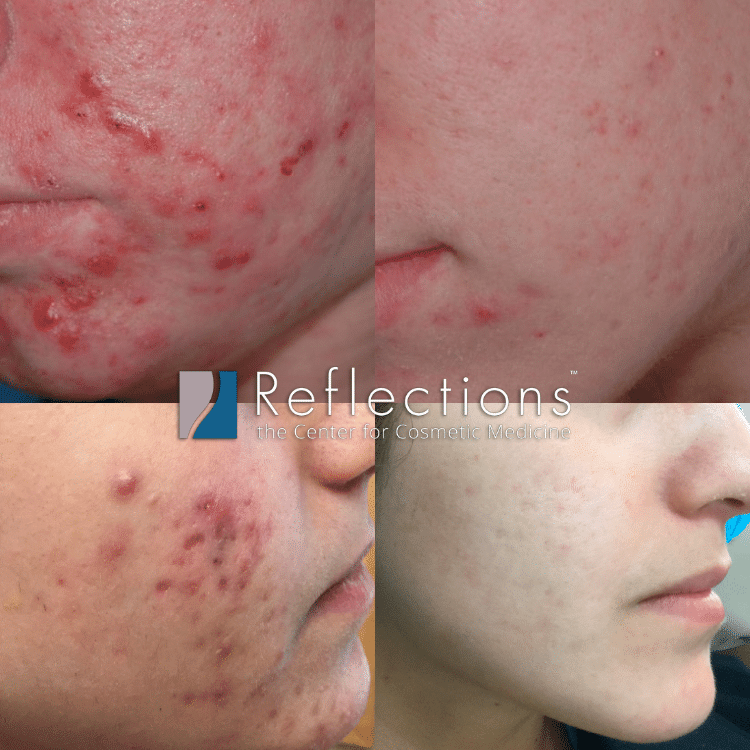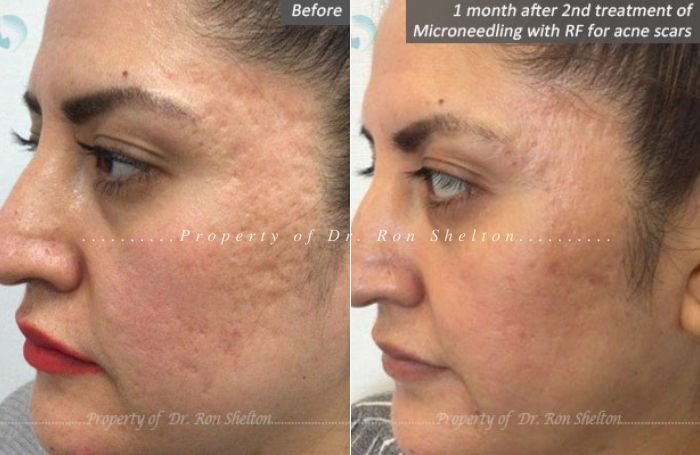Acne Scars Fundamentals Explained
Acne Scars Fundamentals Explained
Blog Article
The smart Trick of Acne Scars That Nobody is Discussing
Table of ContentsSome Known Details About Acne Scars How Acne Scars can Save You Time, Stress, and Money.The Greatest Guide To Acne ScarsThe Best Strategy To Use For Acne ScarsThe 3-Minute Rule for Acne Scars
Raised acne scars happen when the body produces way too much collagen and develop a visible bump. As we age, acne marks become a lot more visibly because our skin sheds collagen. Some people are more most likely to see marks than others. According to Dr. Garvey, the danger boosts when: An individual has inflammatory acne such as acne cysts.A person hold-ups therapy for inflammatory acne. The longer you wait to seek therapy for acne, the higher the risk of scarring. A person selects at, presses or pops acne. When popping a pimple, you push germs deeper into pore. If we really did not require one more reason not to pop an acne, know that a scar could be the straight result of your actions.
Your hereditary make-up plays a huge function in just how much acne, and what sort of acne you might create. As we claimed previously, there is no magic component to take acne scars away in the blink of an eye. There are treatments offered that aid lessen the scarring over time.
, a skin specialist may lift the scar, bringing it closer to the surface area of the skin to make it much less noticeable. Resurfacing removes layers of the skin, which permits the body to create brand-new skin cells.
A Biased View of Acne Scars
best for all kinds of acne scars. Lasers and various other light treatments can deal with elevated marks securely and effectively. Treatment with a pulsed dye laser (PDL) can help minimize the impulse and pain, lessen shade, and squash a raised scar. For individuals with lighter skin, extreme pulsed light (IPL) also may be a treatment choice.
No damaging events were reported. After 3 needling therapies, there was improvement in the appearance of acne scars in time contrasted with the control team, with marginal discomfort reported. Identifier: NCT00974870 Acne scarring has actually been associated with significant mental repercussions. Treatment of acne scarring stays a restorative difficulty, with therapy techniques that consist of a series of feasible alternatives.
Nonablative and ablative lasers can be utilized to either eliminate or perforate skin in a fine pinpoint pattern, with resulting neocollagenesis; just a portion of the skin is treated with each therapy, and a series of treatments are called for to deal with the whole damaged surface area. It has actually been recommended that neocollagenesis and enhancement of acne scars can also be attained making use of needle rollers, which utilize a mechanical, macroscopic method to induce tiny skin and dermal openings.
Acne Scars for Beginners
Like paint rollers, such tools can be returned and forth along the skin. Needling as a possible therapy for acne scarring was presented by Camirand and Doucet, who explained usage of a tattoo weapon to abrade acne scars. Fernandes,6 consequently insisted that needling with a roller led to percutaneous collagen induction.
At each of these brows through, needling was performed on the research study therapy location, and topical anesthetic was just massaged right into the control area. Digital photographs and negative events (eg, infection, long term erythema, extended edema, serosanguineous drain, bleeding, ulceration, erosion, and pigmentation), including their period, resolution, intensity, partnership to the study treatment, and any see this type of curative actions taken, were recorded before each therapy.

Pain degree was taped based on a 10-point visual analog range after the procedure. Right away after each treatment, mild hands-on pressure with gauze was used for 5 mins to control pinpoint blood loss and lotion secretion. The skin was soaked with saline swabs for an hour to promote hydration while the individuals were educated pertaining to the demand for home treatment.
See This Report on Acne Scars
The tool was then more cleaned by gas sanitation, stored in a shut package, and identified with the individual's name and the first therapy day on the box up until the following treatment. This sanitation procedure was followed to make sure a high degree of infection control in this research study setup. The key result action was the quantitative worldwide scarring grading system, created by Goodman and Baron.
Two blinded skin specialists (S.H. and M.P.) independently rated individuals' acne marks based on conventional electronic photographs obtained at standard and at the 3-month and 6-month follow-up brows through. Forced contract was utilized to integrate ratings. Provided that this was an early pilot test, we considered it appropriate to think about acne marks jointly, not independently, by various morphologic subtypes (eg, rolling, boxcar, ice pick, and so forth).
and M.P.) did not join randomization or therapy and therefore were able to be blinded concerning task. Adjustments in mean mark ratings from standard to 3 and 6 months, specifically, were calculated for the therapy and control arms. Repeated-measures evaluation of difference with pairwise contrasts with Sidak change were performed to test whether the scar score varied on therapy type, time, or the interaction between both.
The Wilcoxon authorized rank examination was utilized to assess whether the difference in total acne mark look was connected with treatment kind. Twenty people consented, and 5 dropped out before the initial therapy.
Getting The Acne Scars To Work
At 3 months contrasted with standard, the decrease in scar useful content score in the needling group was nonsignificant (mean difference, 2.4, 95% CI, 0.01 to 4.8; P =.052) (Number 3). The needling procedure was not particularly uncomfortable. The mean pain ranking was 1.08 of 10. Pain rankings raised a little in time (P =.01), with week 4 discomfort scores (mean, 1.75; 95% CI, 0.90-2.60) substantially greater than week 2 (mean, 0.78; 95% CI, 0.40-1.20) and week 0 (mean, 0.71; 95% CI, 0.40-1.00).
When asked to approximate the pain experienced throughout and in the days after their procedure, individuals generally reported no discomfort (acne scars). The majority of participants were really completely satisfied with their procedure, replied of course when asked if they would do this procedure once again to deal with additional marks, and claimed they would certainly suggest needling to their close friends
Mild short-term erythema and edema, which were not categorized as unfavorable occasions and therefore not formally tracked, were routinely observed by the investigator (M.A.) and reported by individuals after therapies. This research reveals some enhancement in acne scars after a series get more of 3 treatments of needling. There is a statistically considerable renovation in such marks in the therapy team from baseline to 6 months and no significant enhancement throughout this period in the control group.

Report this page